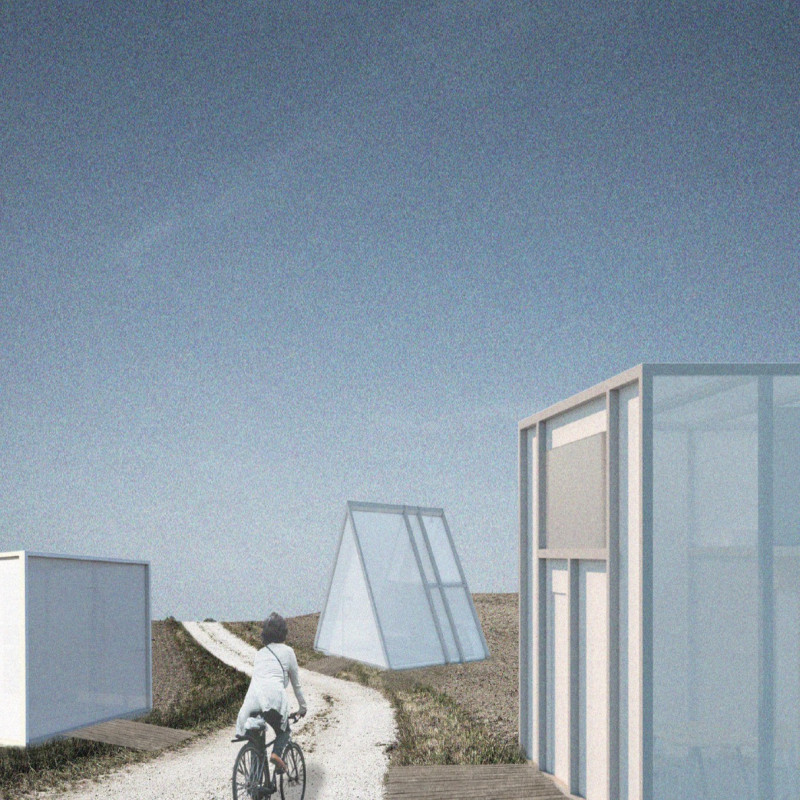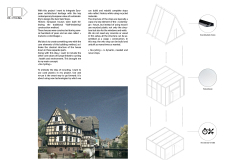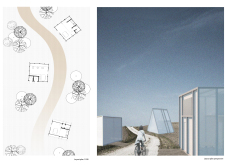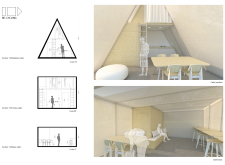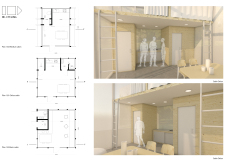5 key facts about this project
The Euro Velo Stops represent a contemporary approach that combines European architectural heritage with modern principles of sustainability. Located in areas popular with cyclists, these structures serve as resting points. They enhance the cycling experience and promote cycling as a viable transport option. The design concept is rooted in historic construction techniques, particularly the "Half-timbering" method and the traditional "maisons à colombages," while also considering today's environmental challenges.
Concept and Materiality
The main idea is captured in the term "Re-Cycling," which highlights the use of recycled materials, especially used plastics, in the design. By embracing this approach, the project moves away from traditional materials like concrete and fresh timber. It aims to reflect a commitment to sustainability. Incorporating recycled plastics into the framework offers a way to connect historic building styles with modern ecological requirements.
Structural Design
The design of the Euro Velo Stops draws from key elements of the "Colombage" house, using recycled plastic for the structures, windows, and walls. This choice not only supports environmental goals but also adds practical benefits. The design honors traditional forms while bringing a contemporary touch through material choices. This results in a blend of historical architecture and present-day needs.
Modularity and Adaptability
An important feature of the Euro Velo Stops is their modular nature. They can be easily taken apart and reassembled, much like a child's building blocks. This flexibility allows the structures to adapt to various user needs and changing urban settings. This ability to respond enhances the project's functionality and makes it suitable for different environments.
Design Detail
Sustainable practices are evident not just in the materials but also in the overall design. The Euro Velo Stops provide essential resting spaces for cyclists. They also express a modern interpretation of heritage architecture. Each structure connects historical aspects with contemporary challenges, creating environments that are both useful and reflective of a sustainable future.


